Matador Network's Blog, page 604
August 23, 2021
These countries will require a vaccine booster shot to get in
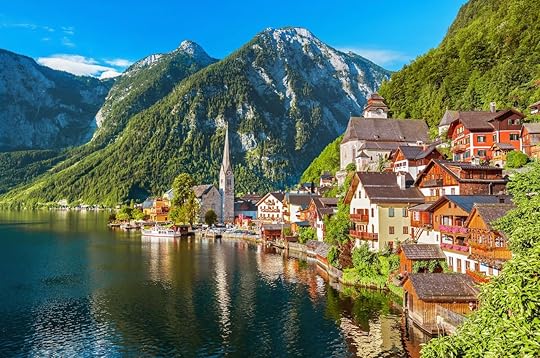
If you were first in line to get your COVID-19 vaccination, you might soon need to be first in line to receive a booster shot. The Delta variant is putting the current COVID-19 vaccine to the test and some countries are already thinking beyond the first two shots by requiring booster shots from international travelers.
Croatia is the first country to set a booster shot requirement for international travelers. The Balkan nations asks that travelers provide a “certificate that they have received two doses of vaccine used in the EU Member States (Pfizer, Moderna, AstraZeneca, Gamaleya, Sinopharm) not older than 270 days, or a certificate that they have received one dose of the vaccine if the vaccine is administered in a single dose (Janssen/Johnson&Johnson) not older than 270 days, provided that 14 days have passed since they received the single dose,” according to the Croatian government website.
That means in Croatia, your vaccine card is only valid for nine months before you’re expected to receive a booster shot. If your vaccine has expired, you’ll need to take a PCR test or rapid antigen test upon arrival, and you’ll have to self-isolate until you get a negative result. If for whatever reason, you are unable to get tested, you’ll have to quarantine for 10 days.
Similarly, Austria is toughening up its entry requirement for those who are vaccinated. While fully-vaccinated travelers from the US (among other countries) are allowed to enter Austria upon presentation of a vaccine certificate, the country’s Official Travel Portal explains that “The vaccine certificate is valid for 270 days after the 2nd dose for 2-dose-vaccines. For vaccines that require only one dose, it is valid from the 22nd day for 270 days from vaccination.” After the 270th day, a booster shot will be needed.
As the Delta variant continues to spread, this could become the trend in other countries. The Biden administration has already announced its plans to begin vaccine booster doses to Americans who received their vaccine at least eight months earlier. 
The post These countries will require a vaccine booster shot to get in appeared first on Matador Network.
How to plan a last-minute budget vacation to Nantucket this fall
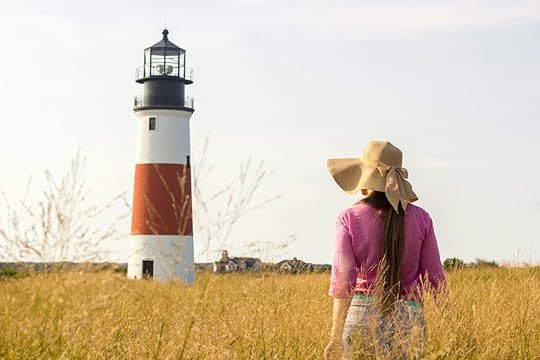
The island of Nantucket, or ACK as it’s frequently abbreviated, is located 30 miles off the coast of mainland Massachusetts and is just over 100 square miles — about half the size of neighboring Martha’s Vineyard. While the two islands are not far apart geographically, culturally, they are separated by a wide chasm: Martha’s Vineyard is more subdued and laid-back, while Nantucket is more glamorous and ostentatious. Martha’s Vineyard feels more like New England, while Nantucket feels more like Manhattan.
Nantucket is synonymous with vacations for the wealthy, and the island does beckon high-rollers comfortable splurging on some of the priciest hotels, restaurants, and boutique shops in the nation. But the island does not preclude visitors on a more modest budget from visiting and having a good time. In fact, some of the most rewarding activities on the island are free or almost free, and there are also plenty of delicious cheap eats. With the glorious, crisp weather of the coming months, now is the perfect time to start planning a last-minute budget vacation to Nantucket.
Reasons to visit in the fall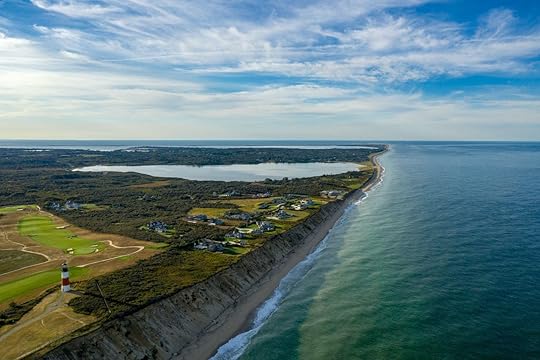
Photo: HDjeff/Shutterstock
Nantucket’s high season gives way to the more laid-back shoulder season after Labor Day. Almost all businesses remain open until Columbus Day/Indigenous Peoples Day (October 11), but in the fall, the floods of tourists of the summer reduce to a mere trickle. After Christmas, most businesses close until the spring, and tourism essentially ceases.
Fall is the best time to be on Nantucket. The relentless summer heat yields to mild, sunny days — still great for hours on the beach — and cool, invigorating nights. The island’s foliage transforms into a palette of yellows, reds, and oranges, and the heady scent of burning firewood wafts through the island’s cool air. The fall sunsets are even more dramatic than those of the summer. (Pro-tip: go to the neighborhood of Madaket to catch the best views of the island’s sunsets over the Atlantic.)
For foodies, the fall is the ideal time to try restaurants that are usually booked solid for weeks or months during the summer, and menus change to incorporate scallops (September to November is the harvest season for this succulent bivalve) and produce like apple, squashes, and cranberries. Speaking of cranberries, visitors can visit cranberry bogs during the fall months and watch the harvest — a celebrated tradition on Cape Cod, Martha’s Vineyard, and Nantucket.
How to get to Nantucket
Photo: Steamship Authority/Facebook
The most popular way to get to Nantucket is by the Steamship Authority from Hyannis, Massachusetts. Tickets are $55 per adult, and the ride takes about an hour and 45 minutes. With the ocean breeze and a local Whale Tale Ale in hand from the ship’s bar, the ferry ride passes pleasantly. You can also bring a vehicle on the Steamship Authority with prior reservations (about $118). Still, Nantucket is so small that bikes are an easier, and more enjoyable, way to get around the island. If you choose to drive and leave your car in Hyannis, long-term parking is available near the ferry terminal for about $10 per day.
You can go directly from Manhattan to Nantucket on the Seastreak Ferry, a ride of about four hours. Seastreak’s NYC port is located on East 35th Street, and round-trip tickets are $260 during non-holidays and $330 on holidays (e.g., Easter, Christmas, and Labor Day). Seastreak also ferries passengers from New Bedford, Massachusetts to Nantucket, a two-hour ride that costs $90 for a round-trip ticket.
Memorial Airport on Nantucket has flights between most major cities in the Northeast. Cape Air, JetBlue, American Airlines, and United Airlines regularly travel to the island, but flying is several times more expensive than taking the ferry (and much less romantic).
Getting around NantucketSince the island is small, we recommend exploring Nantucket on bicycle. You can rent bikes from Nantucket Bike Shop for $35 a day. Renting a jeep is worth the money if you plan to drive out on the sand and costs about $60 per day. The Nantucket Regional Transit Authority maintains shuttle buses circulating throughout the island — a convenient and cheap way to get around. Fares are $2-3 dollars per ride, and the shuttle buses are equipped with bike racks. Lyft and taxis are easily hailed, too.
Lodging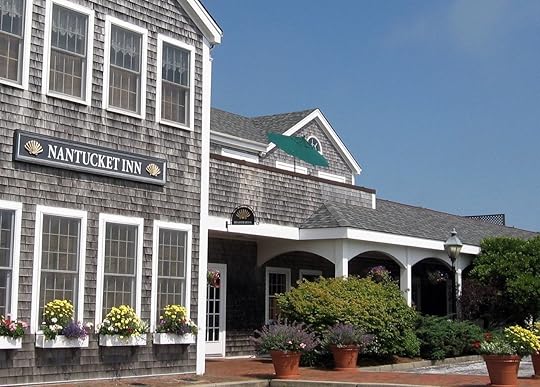
Photo: Nantucket Inn/Facebook
If you can afford pricey rates ($800-1000 per night), the island is home to a handful of world-class hotels, like the Relais & Chateaux Wauwinet boutique hotel. If you’re traveling with more modest means, cheaper options exist on the island, too — especially if you book in advance. Hotel Pippa, a boutique guest-house popular with bachelorette parties, runs about $400 per night and has impeccable online reviews. Hotel Pippa is conveniently located in downtown Nantucket, a few minute’s walk from cafes, restaurants, bars, etc. The Nantucket Inn offers rooms for slightly over $350 and is well-reviewed as a no-frills accommodation. The Languedoc Inn provides simple but comfortable rooms for as low as $195, an absolute steal on Nantucket — and the hotel boasts a renowned French restaurant to boot.
Staying in Airbnbs or bed-and-breakfasts is another affordable option. For a little under $200/night, you can Airbnb a sailboat anchored in the harbor that sleeps five people. The host has almost perfect reviews, and if you’re traveling with others and splitting costs, this option is ideal. Other Airbnbs, like the , cost around $500 per night — spendy indeed, but again, if you go in with a group, you stay comfortable and reduce the price to a reasonable rate.
Bed-and-breakfasts on Nantucket are cozy and charming, and if you book a couple of weeks in advance, you can find reasonable rates. A bit more of a splurge, 76 Main offers sumptuous and beautifully decorated rooms for around $850 per night. Seven Street Inn offers rooms for around $500 per night, a price that includes breakfast.
Free and near-free Nantucket activitiesThe beach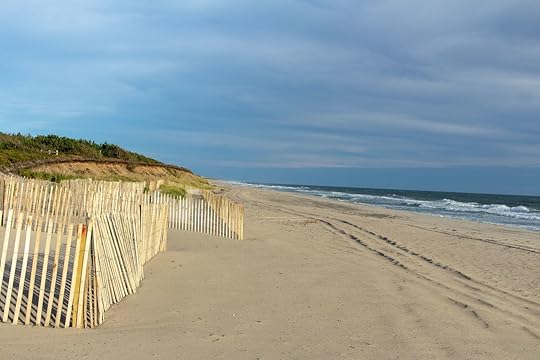
Photo: Adam Wilding/Shutterstock
Nantucket’s most enjoyable daytime activity, namely whiling away the hours on a beautiful beach, is free. While many of the island’s beaches are private and only accessible with explicit permission, there are many public beaches on the island.
Crab apple tree- and beach grass-lined trails winding through sand dunes take you to Steps Beach, a low-key seashore without facilities or lifeguards but with thinner crowds. Like the neighborhood of Madaket, Steps Beach is one of the best places on the island to watch the sunset over the Atlantic. Settle in with a beach towel, a good book, and some sandwiches from Henry’s Jr. Sandwich Shop, and feel the stress melt away.
Dionis Beach is about three miles outside of town, far enough away to deter heavy crowds but close enough to make for an easy bike ride. Sheltered by dunes and serviced with lifeguards and facilities, Dionis Beach is an easy walk from the parking area, and its calm waters are perfect for less adventurous beach-goers or families with children.
Nantucket has a handful of excellent surf spots. Cisco Beach and Surfside Beach are popular spots to catch waves, and both beaches have lifeguards on duty and plenty of available parking. If you didn’t bring a surfboard, rentals are available at Nantucket Surf Club right in the middle of town.
Lighthouses and hiking trails
Photo: Alinn Mihai/Shutterstock
Bicycling is one of the best ways to explore the island’s three historic lighthouses, each located in a distinctive island sector. If you set out early and are comfortable with long rides, you can easily hit all three in a day. In centuries past, when shipwrecks around Nantucket were not infrequent, the lighthouses guided captains through the often-treacherous waters around the island; nowadays, they only serve as historical points of interest and symbolic reminders of the island’s legendary maritime history.
Great Point Lighthouse, a lonely, storm-weathered white tower on Nantucket’s northern extremity, is about an hour’s bike ride from town. Brant Point Lighthouse is within walking distance of town, and Sankaty Lighthouse, an imposing red and white tower, is on the island’s eastern coast and about an hour by bike from town. The Sconset Bluff Walk, one of the best hikes on Nantucket, is a two-mile trail around Sankaty Lighthouse and the eastern coast of Nantucket. The walk offers nonpareil views of the open Atlantic, Nantucket’s sea cliffs, and many of the island’s most luxury homes.
Disc golfAn afternoon of Disc Golf is another way to have fun on Nantucket without spending money. Disc golf operates on essentially the same principles as traditional golf, but instead of golf balls and holes in the ground, the game is played with frisbees and hanging baskets. According to their website, the non-profit Nantucket Disc Golf aims to “promote the mental and physical well-being of the youth on Nantucket by providing a healthy, inexpensive, family-friendly, year-round recreational alternative.” Their championship course, comprised of 18 holes and with a par of 68, runs through Nantucket State Forest, a 143-acre sweep of untouched woodlands in the middle of the island.
Museums and history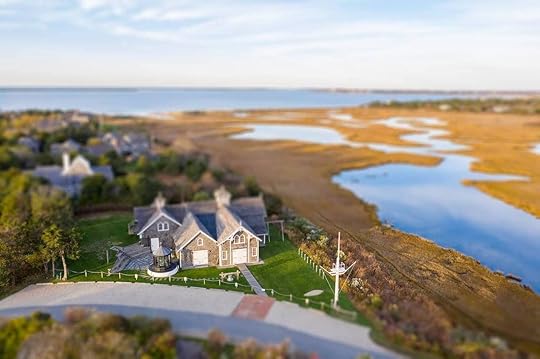
Photo: Egan Maritime’s Nantucket Shipwreck & Lifesaving Museum/Facebook
Tickets to the Shipwreck and Life-Saving Museum are only $10, and this museum allows visitors access to some of the most beautiful views of the marshes, bogs, and seagrass-speckled dunes of Nantucket’s interior. The museum takes about an hour to visit and is a great way to learn about Nantucket’s maritime and whaling history.
KayakingIf you’re up for some exercise, rent a Kayak from Nantucket Community Sailing for $25 and explore the island’s coastlines, ponds, and marshes. Kayaking off the coast of Nantucket offers glimpses of the island’s private docks, yacht clubs, and sailboats. Out on the water, you might even be lucky enough to spy a gray seal or any number of species from the island’s thriving avian life, like ruddy ducks or mute swans.
Nightlife on NantucketTo catch some live music, throw back a few cold ones, and blow off steam in a milieu of both tourists and islanders, head over to the Chicken Box or The Muse. Depending on the show, tickets at either venue can cost anywhere from $40-100; on weekends; however, the cover charge at the Chicken Box is always $10, no matter the performance. Disguised inside a clapboard building that looks more like a private home than a music venue, the Chicken Box hosts local bands, as well as acts from Boston, Greater New England, and beyond. The Chicken Box’s patio, a fenced-in area with large picnic tables, is a welcome respite from the crowds indoors during popular shows. Like those of the Chicken Box, The Muse’s concerts tend to be lively, packed, and raucous, with reggae, rock, and indie bands taking the stage. Locals swear that The Muse’s kitchen whips up some of the best pizza on the island.
Dining on Nantucket
Photo: Mystic Stock Photography/Shutterstock
Beer-lovers visiting Nantucket cannot depart the island without a visit to Cisco Brewers, one of New England’s most acclaimed breweries and the creators of Whale Tale Ale. The brew pairs perfectly with games of beach volleyball, bonfires on the beach, and fishing trips. Cisco Brewers also houses several of Nantucket’s best food trucks, serving up delicious, affordable plates as varied as dumplings, raw oysters, and buttery lobster rolls. Their fall offerings, like the Dock Lager Dark Lager, are among their best seasonal beers.
While not anywhere near the Mexican border, Nantucket has a couple of decent — and relatively cheap — Mexican/Tex-Mex joints. Easy Street Cantina slings elegantly crafted tacos for around $5 and big, satisfying, bean-, meat-, guac-, and cheese-laden burritos for about $12. The fish tacos are a highlight. Henry’s Jr. Sandwich Shop serves oversized grinders — New England’s version of the elongated sandwich known to New Yorkers as a hero and Philadelphians as a hoagie — choc-full of shredded lettuce, assorted cold-cuts, and tangy Calabrian peppers for under $10.
New England beach towns go hand in hand with excellent ice cream parlors, and Nantucket does not disappoint in the department of creamy, cold confections. Juice Bar and Jack + Charlies are both tried classics. Order your cup or cone topped with chocolate or rainbow “jimmies.” 
The post How to plan a last-minute budget vacation to Nantucket this fall appeared first on Matador Network.
Amtrak food and drink options: Everything you need to know before your next train trip
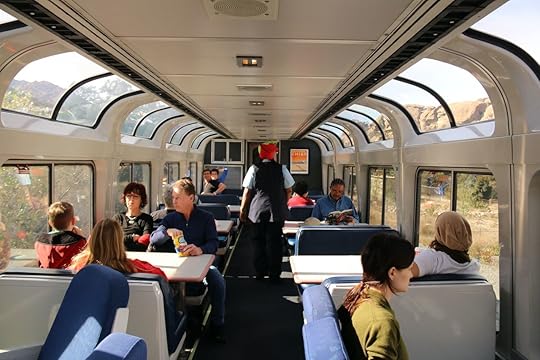
For the past 50 years, the national passenger railroad service (“Amtrak” is a combination of the words “America” and “track”) has been taking passengers across the continental U.S. and into parts of Canada. For the past decade, it’s also been my preferred mode of transportation for getting around the Northeastern United States. There are myriad reasons: comfort and ease is a big one. You get significantly more space than on a plane or in a car, and you can simply buy a ticket and hop on without the same luggage, security, and boarding hassles that taint the airport experience. There are also great views, the ability to get up from my seat to stretch and explore, and the welcoming pet-friendly policies (my cat is a frequent rider). After I took Amtrak cross-country on a long journey from New York to San Francisco, by way of Washington DC, Chicago, and Los Angeles, I added another item to my list of things to love about Amtrak travel: the food in the dining car is surprisingly tasty.
If you think train food is anything like the airplane food comedians love to joke about, then it’s time to think again. Here’s everything you need to know about eating on Amtrak.
Where to eat on Amtrak trainsDepending on which route you’re a passenger on, your train will most likely have at least one of two dedicated cars that you can visit when you get hungry.
The most common is the Café car, which is essentially a snack bar. You can purchase a variety of snacks (like cookies, candy, cheese, and hummus), or if you’re looking for more filling options, burgers, pizza, and hot dogs are also standard fare. During my many regional travels, I preferred to grab a bite at my departing station over eating in the Café — there are usually more options in a food court, and you’re able to bring food onto the train with you to eat at your seat.
In addition to the Café, longer haul train trips will also feature a traditional Dining Car, — a restaurant on wheels. An on-board chef prepares made-to-order breakfasts, lunches and three-course dinners that riders select from a seasonally updated menu.
The coronavirus pandemic understandably impacted Amtrak’s service quite considerably. Though the rail service is rebounding, traditional dining is currently available on just seven, mostly Western routes: California Zephyr (Chicago to San Francisco), Coast Starlight (Seattle to Los Angeles), Empire Builder (Chicago to Portland/Seattle), Southwest Chief (Chicago to Los Angeles), Sunset Limited (New Orleans to Los Angeles), and Texas Eagle (Chicago to San Antonio), as well as the Auto Train (Washington DC to Orlando).
How to get a table at the Amtrak Dining Car
Photo: PICTOR PICTURE COMPANY/Shutterstock
All meals in the Dining Car are complimentary for first-class passengers. Before the pandemic, coach passengers could make dining reservations and pay for their meals. Unfortunately, in an effort to better control the number of people coming into the Dining Car, traditional dining is currently limited to guests who have a private room booked in the Sleeping Car.
While the Café is casual and will serve passengers who pop in on a whim from early morning until late at night, reservations are always required for your meals in the Dining Car. A dedicated attendant assists First-class passengers in the Sleeping Car throughout their journey to take down their preferred dining times in advance of each meal. As an added safety measure, complimentary room service is also now available.
What it’s like to eat on the Amtrak dining carEating in the Dining Car has the same feel as eating at your favorite hometown diner: you’re helped by the same server for all of your meals (though the food is included in the price of your ticket, don’t forget to tip them and your sleeping car attendant at the end of your journey) and there’s enough on the menu to try something new for each of your meals, or, if you prefer, you can order the same dish each day. Best of all, it offers a prime opportunity to connect with some of your fellow riders.
Each table seats four people, and before the pandemic, Amtrak aimed to fill each spot. That meant if you were traveling alone or in a group of two or three, you were likely to have a table-mate for some or all of your meals. I was journeying with another person, so we often paired up with another individual or duo. One night, we were seated with an elderly woman who said seeing the country by train had always been a dream of her late husband’s. They spent years planning the journey together, but he became ill and passed before they could see it realized. She decided to take the trip alone to honor his memory, and their friends came together and pitched in money to make it a more feasible reality.
What type of food is served in the Dining CarThe food served, as previously mentioned, is tasty. Don’t expect Michelin star quality; this is a moving train, after all. But the meals and service are miles (of train tracks) past what you’re used to eating on airplanes or in food courts. Amtrak’s signature dishes like its thick-cut Texas French toast and 8 oz. flat iron steak never miss the mark. In the past, menu items have included a lobster crabcake appetizer and tortellini with pesto cream entree. There are several vegetarian and gluten-free options for each meal of the day, as well as dishes that Amtrak labels a more healthy choice. Diners have one complimentary alcoholic beverage included with each dinner, with additional drinks available a la carte. All soft drinks are complimentary.
Kosher and vegan meals are also available on overnight trains when requested at least 72 hours in advance. Vegan options are available at the Café, with no advance notice required. The menus vary from route to route, but you can always check out sample menus for each train on the Amtrak website.
Bringing your own food on Amtrak trainsIf you’d like to bring your own food, be it a specialized meal or simply snacks and beverages, that’s allowed, too! The only kicker is that they cannot, understandably, be consumed in the Dining Car. You can store and eat your own goodies at your seat, in your private room, or even in one of the Sightseer Lounges, should your train offer one.
You can bring alcoholic beverages, too, but only if you have a private room. You technically can’t consume alcohol in a public space, so you’d need to limit your partying to your space in the Sleeping Car. However, if you purchase an alcoholic drink from the Café or Lounge, you may drink it elsewhere. On one night of our trip, my friend and I bought some beers and played a [very tame] drinking game with a deck of cards and some new friends in the Lounge.
Traveling long distance by train should be on everyone’s bucket list. It’s an incredible way to see America’s spacious skies and amber waves of grain while heading to your destination. Long travel days and the hangar that follows can be one of the most stressful parts of getting from point A to point B, but on Amtrak, you’re covered. It might even end up being one of the most enjoyable aspects of your adventure. 
The post Amtrak food and drink options: Everything you need to know before your next train trip appeared first on Matador Network.
The 9 best San Francisco Airbnbs with views of the skyline and Golden Gate

We hope you love the spaces and stays we recommend! Just so you know, Matador may collect a small commission from the links on this page if you decide to book a stay. Listed prices are accurate as of the time of publication. See our full Advertiser Disclosure here.
San Francisco Airbnbs should have three primary qualities. They should be located in or around the city center, they should offer views of either the skyline or Golden Gate (bonus points for both), and they should enhance your experience of the vibrant international culture of the city. These San Francisco Airbnbs fit the bill perfectly. Here are some of the best Airbnbs to rent for a vacation, work trip or when visiting family and friends.
1. Remote work penthouse with roof deck
Photo: Airbnb
Superfast WiFi. Nearby cafes and pubs. A rooftop patio. This penthouse apartment in downtown San Francisco sets you up for remote work success. The unit itself is also quite something, with exposed brick walls and vibrant decor offering a modern aesthetic that’s as welcoming as it is cozy. It’s efficient and comfortable and puts you nearby to the best of the city. And at this price point, it’s also just as affordable as renting an apartment, making this an ideal option for long-term stays in San Francisco.
Two guests, one bedroom
Price: $111 per night

Photo: Airbnb
SoMa is the heart of the action in San Francisco these days, home to South Beach, Mission Bay, and the San Francisco Giants. One of the best San Francisco Airbnbs, this unit is well-trimmed, with a modern kitchen and an exposed staircase leading up to the roofdeck. From here, you’ll enjoy city views that most only see from the window of an airplane. And should you wish to explore beyond the reaches of SoMa, pubic transit is right there. This is a great unit for a small group or family.
Five guests, two bedrooms
Price: $313 per night

Photo: Airbnb
This warehouse condo epitomizes San Francisco chic. It’s in the heart of the city near Mint Plaza, within walking distance or a quick hop to everything from Haight-Ashbury to the Mission to South Beach, and puts you a stone’s throw from the cuisine of every continent. San Francisco Airbnbs that are this comfortable and convenient are tough to come by at this price, making the unit perfect for couples or solo travelers looking to spend some time getting to know the city.
Two guests, one bedroom
Price: $229 per night

Photo: Airbnb
Who hasn’t dreamt of staying in a San Francisco Victorian townhouse? A stay here is like living in Full House and Nash Bridges all at once, with an added dose of modernity and less drama. It’s cute, convenient, and offers an experience that you won’t find in most San Francisco Airbnbs. If traveling with family or a small group, the home houses up to five guests with plenty of room to stretch in the backyard.
Five guests, two bedrooms
Price: $249 per night

Photo: Airbnb
Live the San Francisco dream in this private guest suite right in the heart of San Francisco. Walk in the footsteps of locals, experience the city’s best cafes, and wander through Golden Gate Park. Or simply chill with a drink on the patio overlooking one of the most vibrant parts of the city, with views of both the bay and Buena Vista Park. If you’re looking for an easy time in the big city, this is your spot.
Two guests, one bedroom
Price: $163 per night

Photo: Airbnb
Hotel rooms in San Francisco are notoriously pricey, particularly when they are well-placed. This room at the Hotel Griffon by the Bay is the exception. It’s clean and cozy, with the boutique upscale vibe you’d expect at a nice hotel but charging a rate that is akin to a budget chain across from the airport. From the hotel you can walk, Uber, or take transit to everything in the city, though we encourage you to head to the waterfront for a morning stroll at least once during your stay. The Bay looks so beautiful when doused in its morning fog.
Two guests, one bedroom
Price :$95 per night

Photo: Airbnb
This garden apartment offers three primary perks. First, it’s located near where the city meets the Pacific Ocean, offering a unique vantage point of San Francisco and an experience you won’t find in SoMa or Downtown. Second, it’s surrounded by a beautiful garden, which is an absolute pleasure to wake up to each morning. And speaking of waking up, the third charm is the bed. Reviews state it’s huge and ridiculously comfortable. For solo travelers or couples looking for a romantic stay, San Francisco Airbnbs don’t get better than this.
Three guests, one bedroom
Price: $157 per night

Photo: Airbnb
What makes San Francisco one of the best cities in the US is its international urban culture. This modern loft offers easy access to that vibrancy, along with an inspiring design that emphasizes the city’s skyline from every vantage point. The unit’s spacious design optimizes every square foot, giving you plenty of room in a city known for its often tight quarters. This is an ideal loft for a family, couple, or small crew of travelers looking to experience the best of San Franciso but needing an inspiring place to remain productive as well.
Four guests, one bedroom
Price: $420 per night

Photo: Airbnb
Family travel is so much easier when your accommodations feel like home. This townhome is perfect at accomplishing that — it’s clean and modern and well-equipped for everything a traveling family could need. Bonus that it’s also full of super-inspiring art and the interior design puts it among the best San Francisco Airbnbs for simply lounging. Outdoors is a fire pit around which to dine and share stories, a rare amenity in a big city but one that perfectly complements the modern luxury of this home. 
Six guests, four bedrooms
Price: $1,200 per night
The post The 9 best San Francisco Airbnbs with views of the skyline and Golden Gate appeared first on Matador Network.
How to use the new $200 American Express Platinum travel credit this summer to save you hundreds

Over the course of the pandemic, major credit card issuers have added a host of perks to supplement some of the drastic changes in lifestyle, particularly when it comes to travel rewards cards. Some issuers added points bonuses for grocery stores and gas stations, while others added credits for streaming services and food delivery apps. American Express, above all others, may just come in at the top of the pack with its comprehensive benefit additions.
Its long list of new offers also includes a $200 travel credit. Any personal Platinum cardholder will receive the credit when booking through the Amex Travel portal as long as their card was renewed between April 2020 and March 2021. Keep in mind, this $200 is on top of the already well-loved $200 airline fee reimbursement that’s already available annually to Platinum cardholders.
American Express Platinum travel credit can be used on any booking on Amex Travel, including prepaid or postpaid reservations. It applies to hotels, flights, cruises, and rental cars.
While it’s always a plus to get $200 deducted from any vacation purchase, one of the best ways to leverage this bonus is to apply it to a reservation with the American Express Fine Hotels and Resorts program to compound the benefits. If this is your first time hearing about Amex Fine Hotels, you’re going to love this. The Fine Hotels and Resorts program is available to Platinum cardholders when booking through the Amex Travel website. A number of luxury hotels around the world participate in the program, providing special add-ons such as:
Early check-in (12:00 PM when available)Guaranteed 4:00 PM check-outComplimentary breakfast for two$100 to spend in the form of food and beverage, spa or property creditRoom upgrade (upon check-in when available)This program is totally free of charge to access with a Platinum card and can be found when searching for hotels through the Amex Travel portal. All the participating hotels appear in a grey box with the unique benefits listed.
For example, let’s say you are looking to book a vacation in San Francisco. Using Amex Travel, you can see the Taj Campton Place is available for an average of $245 per night.

Photo: American Express
Right away, the $200 discount would make this booking just $45 for the night. On top of this, because you’d be booking with Fine Hotels and Resorts, you’d also get the benefits mentioned above, such as free breakfast, $100 to spend on property, and late checkout.
With these perks, you’d end up with a more-than-free hotel room for a wonderful staycation.
If there are no hotels available in the Fine Hotels and Resorts program, you may note another option available when booking through the same Amex Travel portal, called The Hotel Collection. The Hotel Collection is available to Platinum and Gold Amex cardholders and includes $100 to spend at the hotel. While it does not have the same extensive list of inclusions, like free breakfast or late check out, it does offer another way to get a little extra out of your hotel reservation. The $200 travel credit can also be leveraged when booking hotels through The Hotel Collection.
Booking a weekend at the Loews Miami Beach, for example, will run you around $349 per night. However, booking through Amex Travel plus The Hotel Collection, denoted in blue, will include a $100 property credit, adding the extra $100 to your $200 credit, almost making your first night free.

Photo: American Express
If you’re looking to finally take that international flight this summer, keep in mind there is a lesser-known offering that American Express Platinum cardholders also have access to International Airline Program. This gives travelers points savings on premium airline seats, including Premium Economy or Business/First Class.
These fares can save you a few hundred dollars, or several thousand, depending on the class, destination, and airline. The $200 credit also applies to these flights, adding an additional incentive to book using the Amex Travel portal. You’ll also earn valuable points (5x per dollar) that you can utilize later or transfer to any of Amex’s partners.
Here’s a flight example, searching via the International Airline Program.

Photo: American Express
Whether you’re looking to stay local and enjoy a few nights at a nice hotel without breaking the bank or take that long-awaited international flight, the American Express Platinum travel credit is an easy win to combat the rising annual fee. 
The post How to use the new $200 American Express Platinum travel credit this summer to save you hundreds appeared first on Matador Network.
Here’s what you need to know about the changing cost of travel as the pandemic drags on
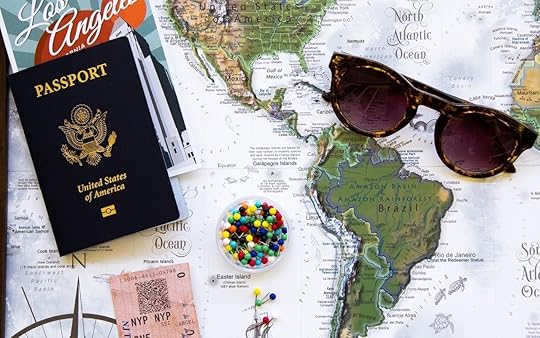
Travel made a huge comeback this summer as we thought we could see the end of COVID-19. Many were booking flights and hotels, taking road trips, renting Airbnbs, and finding the next tropical destination that would soon be open.
But the Delta variant is causing people to question vacationing, and the travel industry is trying to adjust. Along with this, the cost of travel is starting to rise. Destination Analytics found in a recent survey that people’s optimism in travel had crashed by 40% since early June.
Here’s what the New York Times reported on how prices are rising and what you can expect when planning your next trip this fall:
AirfareThe Consumer Price Index reported fares increased 7% between April and May and had a 3% increase in June and July.United Airlines plans to operate with 26% fewer flights in its third-quarter, compared to 2019.Southwest has experienced a decrease in booking and an increase in cancellations.Hopper expects a 10% decline in domestic airfare in the fall and predicts that fall leisure travel will continue as people figure out how to travel during a pandemic.AccommodationsAirbnb and other vacation rentals are beginning to increase by 20%, compared to 2019.Holiday bookings have increased by 250%.Hotels in popular destinations like the Florida Keys and Myrtle Beach, S.C., increased in price. The August 2019 four-week average in the Florida Keys is $239 compared to $499 this month.There are still deals to be found in big cities. ( Ex.— New York City is at roughly $205 on average compared to $240 in 2019)Car rentals and ridesharingDue to the shortage of drivers, prices for Uber, Lyft, and other rideshare services have increased.Car rental rates went up 73% according to Consumer Price Index report and most likely will continue to rise.COVID-19 is continuing to cause changes to travel rates and regulations, but we’ll keep you updated.
The post Here’s what you need to know about the changing cost of travel as the pandemic drags on appeared first on Matador Network.
August 20, 2021
The FAA has fined unruly passengers more than $1 million in 2021 so far

A growing number of passengers are flying again as travel restrictions are being lifted. With that, the Federal Aviation Administration (FAA) has also noticed a rise in cases of unacceptable passenger behavior. After FAA Administrator Steve Dickson signed an order a Zero Tolerance Policy toward unruly passenger behavior on January 13, 2021, the administration has fined 120 passengers a total of over $1 million in 2021 as of August 19. Of the 3,889 reports, 2,867 are for passengers who refused to follow the federal mask mandate.
The second most expensive fine was $42,000 against a passenger on a JetBlue flight on May 16 from New York to San Francisco. The passenger was fined for interfering with crewmembers after failing to comply with the facemask mandate, making non-consensual physical contact, throwing things, and threatening bodily harm, including stabbing gestures toward other passengers. The passenger was also found snorting what “appeared to be” cocaine from a plastic bag.
The policy was adopted not only because of mask mandates. The FAA noticed an increase of reports they attributed to alcohol consumption, as well as violence towards flight attendants. Although FAA regulations specifically prohibit alcohol consumption aboard an aircraft that isn’t served by the airline, some airlines have even gone as far as to ban alcohol from in-flight menus. But the FAA has also requested airports ask concessionaires to discontinue alcohol to go, which can cause passengers to believe they can carry that alcohol onto their flights.
Other major fines trend toward the egregious. On a Republic Airlines flight on Feb. 28, from Key West, Florida, to Charlotte, North Carolina, a passenger was fined $17,000 for failing to comply with the facemask mandate, drinking alcohol not served by the airline, and attempting to use a vape pen. A $10,000 fine resulted from a passenger on an Allegiant Airlines flight on April 29, after failing to comply with the facemask mandate and urinating on the lavatory floor, which leaked into the galley area.
The FAA is only able to fine offenders but instructs airlines to call for law enforcement when necessary. Along with traditional PSAs, the FAA has also created a “Kids Talk” video where kids disapprove of adults who behave poorly on flights. It has also created memes that it shares on social media.
View this post on InstagramA post shared by The FAA (@faa)
“As a former commercial airline captain, I know firsthand that disruptive passengers pose a safety risk to the crew and to other passengers. Flying is the safest mode of transportation and we intend to keep it that way,” Dickson said in a Public Service Announcement on July 16. 
The post The FAA has fined unruly passengers more than $1 million in 2021 so far appeared first on Matador Network.
This rich investor plans travel using a spreadsheet of his friends’ income

For us regular folk, the lifestyles of the wealthy and privileged can be an endless source of fascination, entertainment, and righteous scorn. Take the case of TikToker @tcruznc, who stirred up controversy with a video (which is no longer on his feed but still available reposted on Twitter) in which he reveals how he and his friends plan luxury vacations. In the clip, Cruz shows a spreadsheet that outlines his friend group’s incomes, PTO, and gambling habits. The spreadsheet is titled the “Forbes Friend List.”
Cruz, who bills himself as an “Investor w/ 380+ rental houses,” is unapologetically arrogant and tone-deaf throughout the video, which might be why plenty of people on Twitter found it so offensive. Cruz claims that one friend who makes $125,000 per year is nicknamed “Broke Bob,” and shamelessly reveals one column in the spreadsheet is “3rd world destinations? Yes/No.” He also shows columns for how much people would spend on trips of a certain length. For a seven-day trip, the wealthiest friends were willing to spend $125,000 — the same annual income as “Broke Bob.”
In a subsequent video, Cruz reveals that his lower-income friends — those who make around $60,000 annually — “call themselves” the “Welfare 10,” and their spreadsheet includes a column asking whether or not they’re willing to eat at “non-chain” restaurants. But the “Forbes Friend List” includes members of the friend group who (claim to) make as much as $5 million annually — and asks questions geared more toward luxury travel, like which members of the group would be willing to split a private flight.
What in the wealth is this pic.twitter.com/NTPTKT5CZG
— Karim Alammuri (@Radio_Reem) August 18, 2021
After the original video went viral, Cruz, who first became TikTok famous when he showed he had more than $10 million in liquid assets and paid a portion of some people’s bills, had a little explaining to do. He explained in a follow-up video how his friends made so much money (“Broke Bob” is an accountant, while the highest earners were business owners, money managers, and brokers) and how they planned trips. The goal, Cruz said, is for people in the friend group to plan a trip and know who they could invite based on how much it would cost and how much time people can take off because “This way we don’t hurt any feelings.” As for the third world destinations column, Cruz stated that some people “had bad experiences,” and it’s one of the first criteria they look for. He also clarifies that there’s “no income segregation,” and they “all intermingle” — both those on the “Forbes Friends” list and those on the “Welfare 10.”
It’s not hard to see why flaunting the wealth of his friends so openly — especially in a pandemic-stricken world where so many people lost their incomes, jobs, and family members — could be off-putting. Still, there’s an important lesson here for everyone who plans to take a vacation with friends: It is important to be open about finances before a group getaway.
Cruz calls his spreadsheet “pragmatic,” and honestly, he’s right. Perhaps the most useful aspect of Cruz’s spreadsheet is that there are columns for how much people are willing to spend on three-day and seven-day trips. That’s a great question that more people should be ready to ask their friends non-judgmentally. That level of openness gets expectations out in the open and decreases the chance of stress, conflict, or confusion about expenses later in the trip when you should be enjoying yourself, not worrying over money.
Listen, it makes sense that this style of communication is not suited for every friend group. It does take vulnerability to share your yearly income (which might not even be necessary for the average person who wants to adopt a version of Cruz’s strategy) and travel budget. If you do decide to try out a similar spreadsheet, you should be prepared to accept that some people might not be willing or able to participate in the luxury vacation you had been envisioning. It’s important to take that news without pressuring or shaming anyone.
If you can pull it off, as long as everyone involved is comfortable, it will likely result in a vacation where everyone is on the same page, more relaxed, and less likely to strain friendships if someone feels forced to spend money they don’t have on expensive activities or meals that weren’t discussed beforehand. For instance, at one point, Cruz stipulates that his friend group makes it clear who is willing to gamble on a trip and who isn’t.
The next time you’re planning a group vacation, try outlining the cost of each activity or restaurant you want to visit on the trip and get a sense of who is willing to pay and who would rather not stretch their budget. Consider even offering to pay (if you can afford it) for activities you’re especially excited about or interested in so that everyone can participate.
Vacation should be about bonding with friends and taking your mind off worries, not adding new ones just because it’s a little awkward to talk about money. In fact, your next vacation might just benefit from a frank discussion about money — even if you’re not exactly a member of the tax bracket that can afford a private jet. 
The post This rich investor plans travel using a spreadsheet of his friends’ income appeared first on Matador Network.
Every type of mask you’re allowed to wear while flying

On Tuesday, August 17, 2021, the Biden administration extended the COVID-19 transport mask mandate. This mandate requires travelers to wear masks on airplanes, trains, and buses — and inside airports and train stations until January 18, 2022.
However, not any mask lying about your house will do. According to Travel and Leisure, air travelers need to be vigilant as not every airline allows every type of mask on their aircrafts.
If you plan to fly anytime soon, here are some tips on which masks are allowed and what masks are prohibited.
US Airlines Delta Air Lines: Passengers on Delta are permitted to wear disposable surgical masks, valve-free respirator masks (N95 or KN95), gaiters with two layers, and cloth masks with “tightly woven fabric” or a clear plastic window. Masks with slits, punctures, or holes, as well as scarves, ski masks, bandanas, balaclavas, and masks with exhaust valves are prohibited. United Airlines: Travelers must wear a face mask that fully covers the mouth and nose with no vents or openings. Bandanas are prohibited. Travelers may wear a face shield in addition to their face masks, but not in place of one. Southwest Airlines: Travelers are permitted to wear face masks that completely cover their mouth and nose, but neck gaiters must have two layers to be worn. Bandanas, scarves, ski masks, balaclavas, and face masks that aren’t a solid material are prohibited. American Airlines: Travelers can wear masks that fit tightly around their face and cover the mouth and nose. Cloth masks should have two layers. Balaclavas, bandanas, face covers with exhaust valves or vents, masks made with mesh or lace type fabric, gaiters, scarves, and ski masks are prohibited. JetBlue Airlines: Travelers must wear masks that cover their mouth and nose and fit tightly around their face. Masks connected to tubing or battery-operated filters are prohibited. Masks with vents or exhalation valves are not permitted. Travelers may wear face shields in addition to their face masks, but not in place of one. Alaska Airlines: Two-layer, tightly woven cloth masks and gaiters, reusable and disposable masks are allowed on Alaska Airlines flights. Medical masks, N-95 respirators, masks with inner filter pockets, and clear masks are also acceptable. Face masks should not have slits, exhalation valves, or punctures and should fit snugly. Scarves, ski masks, balaclavas, sweater or shirt collars, and bandanas are prohibited. Travelers may wear a face shield in addition to their face masks, but not in place of one. Hawaiian Airlines: Travelers must wear face masks made of solid material that covers the mouth and nose and fits tightly around their face. If cloth masks or gaiters are worn, they should be two layers. Masks with vents, mesh, slits, exhalation valves, and punctures are prohibited. Scarves, ski masks, balaclavas, and bandanas are not allowed. Face shields cannot be worn instead of a face mask.International Airlines Air Canada: Travelers on Air Canada must wear face masks made with protective layers of absorbent fabric (such as cotton) that fit tightly over the nose, mouth and chin. Prohibited items are non-medical masks with an exhalation valve or vent or made with mesh or lace fabric, neck gaiters, bandanas, and plastic face shields/coverings. LATAM Airlines: Travelers can only wear surgical, three-layers, or superior face masks (KN95, N95). Cloth and reusable face masks are not allowed. Finnair Airlines: Permitted masks are surgical masks, FFP2 or FFP3 respirator masks without a valve, or other valve-free masks with the same standard (N95). Air France: Permitted masks are surgical masks or an FFP1, FFP2, or FFP3 type mask, without an exhaust valve. Masks with exhaust valves and cloth masks are prohibited. Lufthansa: Permitted masks are FFP2-, KN95- or N95-standard masks, as well as surgical face masks.

The post Every type of mask you’re allowed to wear while flying appeared first on Matador Network.
Everything you need to know about New York City’s vaccine pass
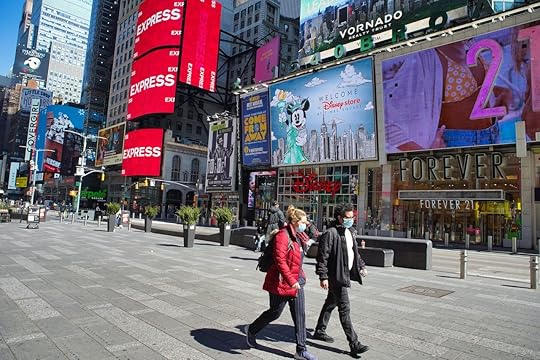
On August 17, an executive order mandating proof of vaccination to participate in indoor activities took effect in New York City. The directive, named the Key to NYC, has been implemented to curb the surge of COVID-19 cases in New York City due to the Delta variant. Though the Key to NYC plan is already in place, local businesses have been granted a month-long grace period to become compliant. The mandate will be officially enforced on September 13, after which establishments will be subject to fines if they’re found in violation.
Whether you’re a New York City resident or have plans to visit the Big Apple in the near future, the Key to NYC initiative requires blanket proof of vaccination. Here’s everything you need to know about patronizing indoor venues now that the order is in effect.
What constitutes proof of vaccination?
Anyone who has received at least one dose of a COVID-19 vaccine approved by the US Food and Drug Administration (FDA) or World Health Organization (WHO) is eligible for a Key to NYC pass. There are three ways to show proof of vaccination: present a paper vaccination card, upload a photo of a vaccination record to the NYC COVID Safe app, or download the Excelsior Pass released by New York state. The NYC COVID Safe app and Excelsior Pass also allow users to upload negative COVID-19 test results for a limited time.
Unlike the NYC COVID Safe app, which does not store information on databases, the Excelsior Pass requires users to input basic information such as their full name, date of birth, ZIP code, and phone number. Once a user’s vaccination record is verified, the Excelsior Pass will generate a QR code that can be used to enter indoor venues. Note that the Excelsior Pass is only available to those vaccinated in New York state or permanent New York residents who received their vaccinations out of state.
Where is proof of vaccination required?
The Key to NYC plan is being implemented across indoor dining, fitness, and entertainment facilities. Included in the list of venues that are required to enforce vaccination passes are restaurants, bars, nightclubs, coffee shops, gyms, indoor pools, dance and yoga studios, movie theaters, concert halls, museums and galleries, aquariums and zoos, performing arts theaters, athletic arenas, convention centers, bowling alleys, arcades, adult entertainment venues, and similar covered spaces. Businesses are allowed to permit entry to people who will be indoors for fewer than 10 minutes, such as to make a delivery or use the restroom, without requiring proof of vaccination. However, mask mandates will still be in effect.
Excluded from the list of indoor venues required to demand proof of vaccination are restaurants without indoor dining, residential and office buildings, senior and community centers, pre-kindergarten through grade 12 public and non-public schools, child care programs, charitable food services, and churches hosting potlucks or similar gatherings.
Who is required to show proof of vaccination?
Everyone looking to participate in indoor activities in New York City will need to show proof that they have received at least one dose of an authorized COVID-19 vaccine before they will be permitted entry into covered spaces. The mandate applies to residents and visitors alike, as well as both staff and patrons of indoor venues. Children under 12 who are not yet eligible for a COVID-19 vaccine are exempt from the Key to NYC requirements, as are non-resident performing artists, professional athletes, and related personnel visiting the city for work.
How can international travelers provide proof of vaccination?
Foreign nationals visiting New York City should be prepared to provide proof of vaccination at indoor venues. Any vaccine that the WHO has approved is considered valid, including the Oxford/AstraZeneca vaccine. International travelers can download the NYC COVID Safe app to create a digital record of their government-issued vaccination card. 
The post Everything you need to know about New York City’s vaccine pass appeared first on Matador Network.
Matador Network's Blog
- Matador Network's profile
- 6 followers



